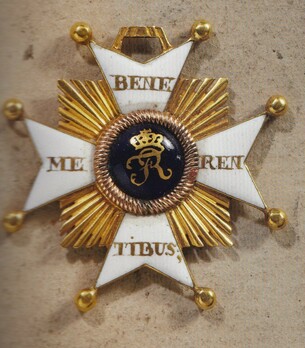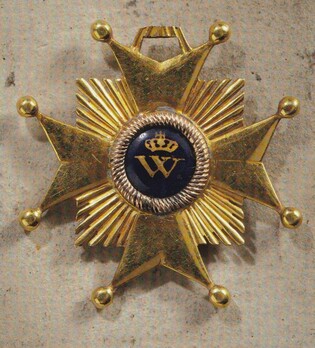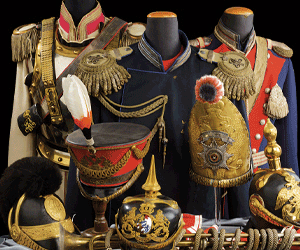Order of Military Merit, Type II, Knight's Cross
SKU: 01.WUT.0106.204.01
Estimated market value:


Estimated market value:
Attributes
Physical Description
A Maltese cross, constructed of gold and enamel. The cross arms are enamelled in white with narrow golden edges, and the tips of the cross arms feature golden ball finials. In between the arms are five golden rays each. The arms feature the golden inscription ‘BENE’ (12 o’clock) ‘ME’ (9 o’clock) ‘REN’ (3 o’clock) ‘TIBUS’ (6 o’clock) (‘to those whose merit made them deserving’). The obverse centre medallion is enamelled in blue and features the crowned golden monogram ‘FR’. The reverse is golden, smooth, and blank. On a loop for suspension, on a yellow ribbon with black side stripes.
History
The Order of Military Merit was originally established as the Militär-Carls-Orden (Military Order of Carl) by Karl Eugen, Duke of Württemberg, on February 11, 1759. On November 11, 1806, the decoration was reorganised and renamed the Order of Military Merit by King Friedrich I. It was one of Imperial Germany’s oldest military decorations.
The decoration was conferred upon officers from Württemberg and its allied states who demonstrated bravery in combat or performed deeds of outstanding merit.
The order's grades and attributes were changed multiple times throughout its history. The monogram on the obverse of the award denotes the king who was in power when the decoration was awarded.
The order originally consisted of three grades, Grand Cross, Commander’s Cross, and Knight’s Cross. In 1809, the grade of I Class Commander’s Cross was added. Recipients of the Commander’s also received a gilded dagger or sabre with an image of the Commander Cross on the grip. The grade was discontinued in 1819.
In 1818, the order statutes were renewed and the cross was redesigned. In addition, the colour of the ribbon was changed from yellow and black to blue. The blue ribbon was used until 1914 when it was replaced with the original yellow and black ribbon. At this time, it was determined that civilian recipients of the order were to be made members of the aristocracy. However, these recipients were stripped of their nobility in 1913.
In 1858, the embroidered Grand Cross Breast Star was replaced with a metal design.
In 1870, a crown was added to the top of the Knight’s Cross. The grades of Grand Cross and Commander’s Cross already featured crowns, and in 1914, the crowns were removed from all three grades.
In 1917, it was determined that recipients could wear an enamelled wreath on the order ribbon in place of the decoration.
An estimated 95 Grand Crosses, 214 Commander Crosses, and 3,128 Knight’s Crosses were conferred. The majority of the awards were issued during the First World War.
Following the defeat of Germany in the First World War, the order became obsolete.
It is estimated that around 620 Type I Knight's Crosses were awarded.

Versions
$5,500 USD
Gold/Enamelled
Obv: BENE MERENTIBUS
32x32mm
620 were awarded.


Comments
Sign in to comment and reply.


Scroll Top